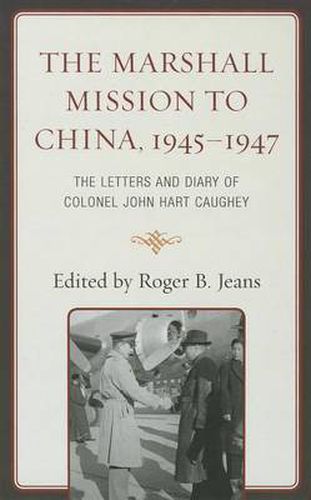Readings Newsletter
Become a Readings Member to make your shopping experience even easier.
Sign in or sign up for free!
You’re not far away from qualifying for FREE standard shipping within Australia
You’ve qualified for FREE standard shipping within Australia
The cart is loading…






This title is printed to order. This book may have been self-published. If so, we cannot guarantee the quality of the content. In the main most books will have gone through the editing process however some may not. We therefore suggest that you be aware of this before ordering this book. If in doubt check either the author or publisher’s details as we are unable to accept any returns unless they are faulty. Please contact us if you have any questions.
This book breaks new ground in our understanding of a pivotal period in the history of American foreign policy, the early Cold War, and the struggle for dominance in China between the Nationalists and Communists. The famous Marshall Mission to China has been the focus of intense scrutiny ever since General George C. Marshall returned home in January 1947 and full-scale civil war consumed China. Yet until recently, there was little new to add to the story of the failure to avert war between the Chinese Nationalists, under Chiang Kai-shek, and the Chinese Communists, led by Mao Zedong. Drawing on a newly discovered insider’s account, Roger B. Jeans makes an invaluable contribution to our understanding of Marshall’s failed mediation effort and the roles played by key Chinese figures. Working from the letters and diary of U.S. Army Colonel John Hart Caughey, Jeans offers a fresh interpretation of the mission. From beginning to end, Caughey served as Marshall’s executive officer, in effect his right-hand man, assisting the general in his contacts with the Chinese and drafting key documents for him. Through his writings, Caughey provides a rare behind-the-scenes view of the general’s mediation efforts as well as intimate glimpses of the major Chinese figures involved, including Chiang Kai-shek, Madame Chiang, and Zhou Enlai. In addition to daily contact with Marshall, Caughey often rubbed shoulders with these major Nationalist and Communist figures. As a meticulous eyewitness to history in the making, Caughey offers crucial insight into a key moment in post-World War II history.
$9.00 standard shipping within Australia
FREE standard shipping within Australia for orders over $100.00
Express & International shipping calculated at checkout
This title is printed to order. This book may have been self-published. If so, we cannot guarantee the quality of the content. In the main most books will have gone through the editing process however some may not. We therefore suggest that you be aware of this before ordering this book. If in doubt check either the author or publisher’s details as we are unable to accept any returns unless they are faulty. Please contact us if you have any questions.
This book breaks new ground in our understanding of a pivotal period in the history of American foreign policy, the early Cold War, and the struggle for dominance in China between the Nationalists and Communists. The famous Marshall Mission to China has been the focus of intense scrutiny ever since General George C. Marshall returned home in January 1947 and full-scale civil war consumed China. Yet until recently, there was little new to add to the story of the failure to avert war between the Chinese Nationalists, under Chiang Kai-shek, and the Chinese Communists, led by Mao Zedong. Drawing on a newly discovered insider’s account, Roger B. Jeans makes an invaluable contribution to our understanding of Marshall’s failed mediation effort and the roles played by key Chinese figures. Working from the letters and diary of U.S. Army Colonel John Hart Caughey, Jeans offers a fresh interpretation of the mission. From beginning to end, Caughey served as Marshall’s executive officer, in effect his right-hand man, assisting the general in his contacts with the Chinese and drafting key documents for him. Through his writings, Caughey provides a rare behind-the-scenes view of the general’s mediation efforts as well as intimate glimpses of the major Chinese figures involved, including Chiang Kai-shek, Madame Chiang, and Zhou Enlai. In addition to daily contact with Marshall, Caughey often rubbed shoulders with these major Nationalist and Communist figures. As a meticulous eyewitness to history in the making, Caughey offers crucial insight into a key moment in post-World War II history.